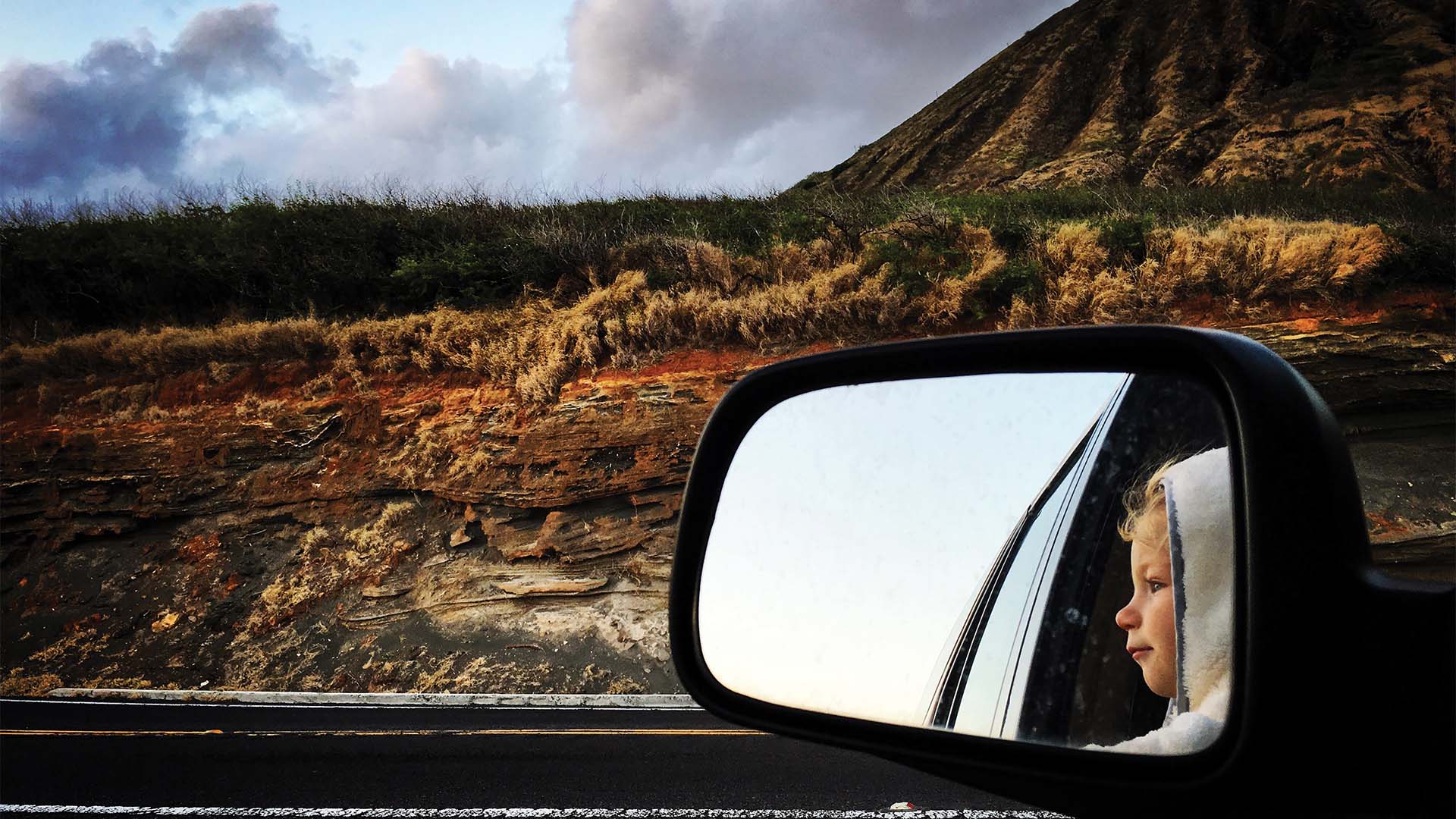The Oʻahu-based photographer speaks about his process, the value of mentors, and why it’s never too late to get started.
Images courtesy of Matt Mallams
Focusing on Oʻahu’s social landscape, photographer Matt Mallams captures the dynamic energy of youth and urban life on the streets of Honolulu. There is a beautiful geometry to Mallams’ photographs. His striking compositions are a reminder that pictures don’t just exist — someone has to make them. With a keen eye for color and an uncanny ability to choose an engaging vantage point, he skillfully brings order to the chaos he encounters. Mallams’ images invite viewers into a world where quotidian events are transformed into captivating visual stories. (Full disclosure: Mallams is the photo editor of Hana Hou!, Hawaiian Airlines’ inflight magazine, produced by NMG Network.)—Phil Jung
Phil Jung Matt, tell us a little about yourself and how you became interested in photography.
Matt Mallams I was born and raised in Mt. Pleasant, Iowa. My dad’s a farmer and my mom’s a nurse. I grew up out in the country where my neighbors were a mile away in all directions. I became interested in the creative arts in high school and after graduating I picked up a camera and started to document my life. Mostly so I could include those images of my friends, family, and travels in my multi-media journals.
During this time, I was 19 years old, trying to find my way and figure out how and where I can best put all my creative energy and focus towards. I wasn’t sure what direction to take, I imagine like a lot 19 year olds. After taking a trip to Europe for a community college class where we studied art history — we went to art museums every morning and explored the historic cities at night — through that I accidentally stumbling into street photography.
When I came home I researched photography schools and before I knew it I was driving out west to Ventura, California to study visual journalism. It was a leap of faith, yet once I got there and saw the ocean, I was like “ok, we’re moving in the right direction”, but then it was only a couple weeks in when I started to learn about the world of photojournalism and I was completely hooked. This is exactly the work I want to be doing and felt I could somehow contribute to this community, with mixing in my art background with documentary photography.


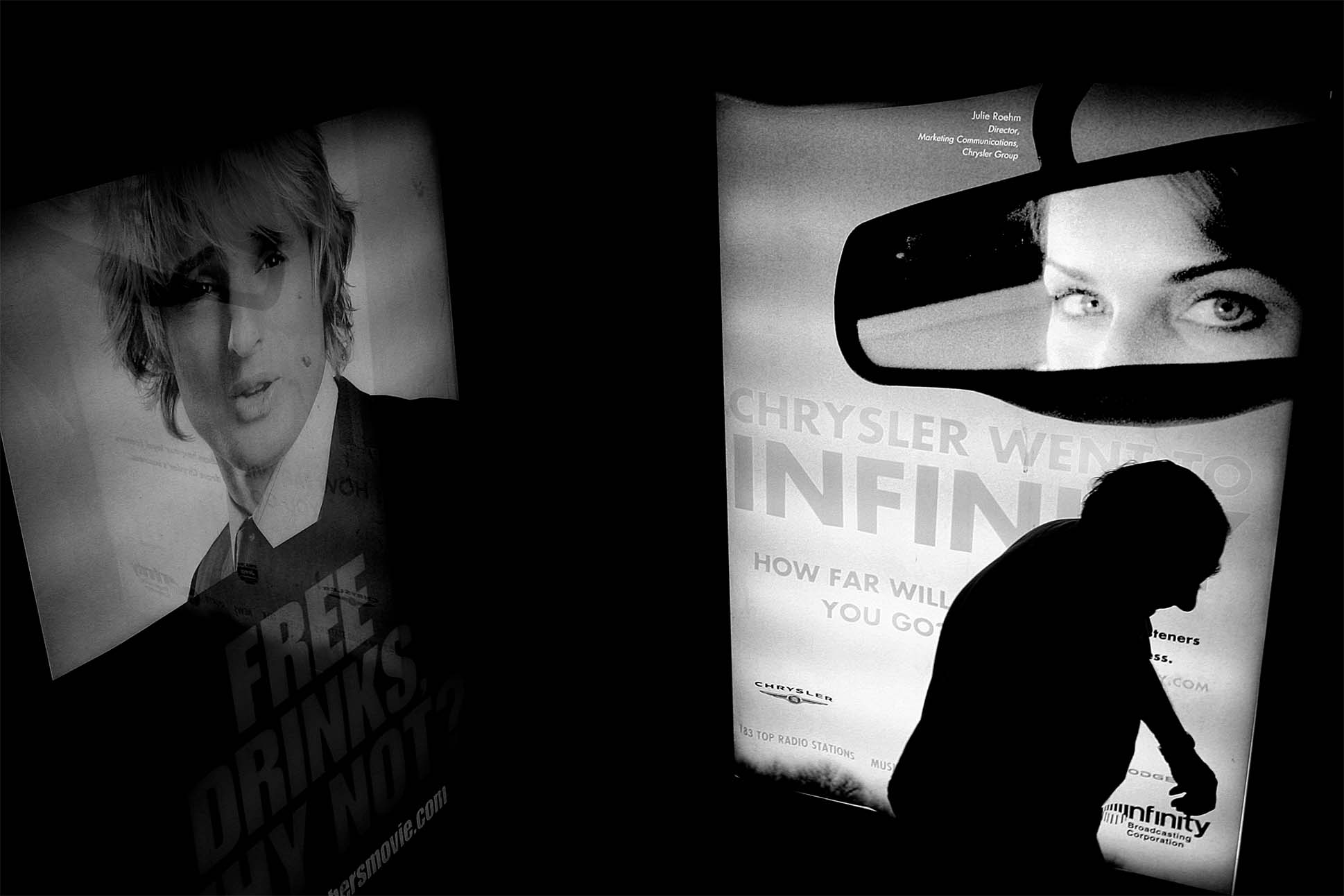

PJ What does photography mean to you, and what about the medium directly appeals to you?
MM It means everything to me. When I started learning about the world of photojournalism, I had a feeling rush over me that I’ve never felt before in my life. It was a watershed moment, and I was just completely blown away by this medium and never been more inspired in my life, and to this day, I’m still running off those fumes. Something about being a fly on the wall, capturing history, recording these moments in time. It’s got this Forrest Gump vibe to it, where you’re there in person, during these moments in history, recording it through your own artistic vision.
What first appealed to me was photography was a creative medium that I always could be doing no matter what — as a hobby, while on vacation, at a concert, while bored at a party and, of course, as a creative outlet. Also, I’m an introvert, but I notice when I had a camera on me, it gave me a purpose — a purpose to ask questions, explore, travel, to see what’s behind that door.
When I started learning about the world of photojournalism, I had a feeling rush over me that I’ve never felt before in my life. It was a watershed moment, and I was just completely blown away by this medium and never been more inspired in my life, and to this day, I’m still running off those fumes.
Also, I love documenting life. I’m a very nostalgic person so photography sure has helped me freeze these important moments in my life. One of my favorites images I’ve ever taken (beyond the millions I have of my kids) is an image of my grandpa running his hand through his hair while washing up after a long day of work on the farm. He passed away in 2020 and is my hero, and having documented that quiet moment that I can revisit means the world to me. It’s not a particularly strong image, but when I see it, it boils up all the great memories we’ve shared in our life.
PJ When did you start taking your photography seriously?
MM As soon as I got into it in 2003. I hit the ground running hard. I lived and breathed it for at least five years straight before I came up for air. I mean, I didn’t even know much about popular culture at that time because I was just so focused on this one thing.
PJ You went through the well-established photojournalism program at Brooks Institute in Ventura, California. How has that influenced your process and way of seeing the world?
MM That had a huge influence on my process and how I see the world. I got to study photojournalism with some of the top professionals in the industry. I learned everything I know from that program. One thing that really stood out was every other Wednesday night they had a guest speaker come and give a presentation about their work. That lit a fire under me each time, so I couldn’t have thanked them enough for providing that for us. So being introduce to some many different professionals and hearing their story from when they were in school to where they are now opened my eyes and gave me the belief that one day I could be a working professional and telling important stories about my community.
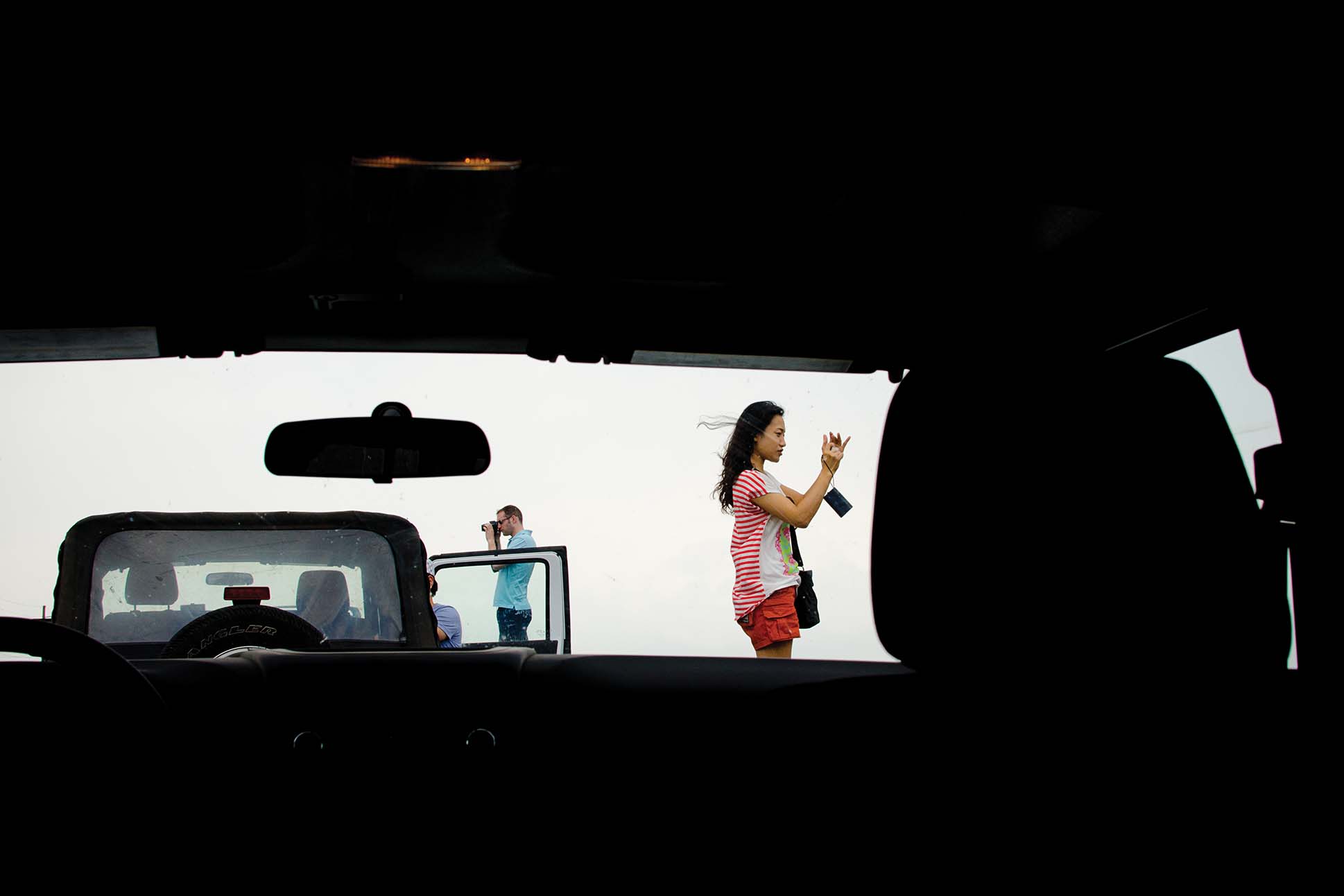

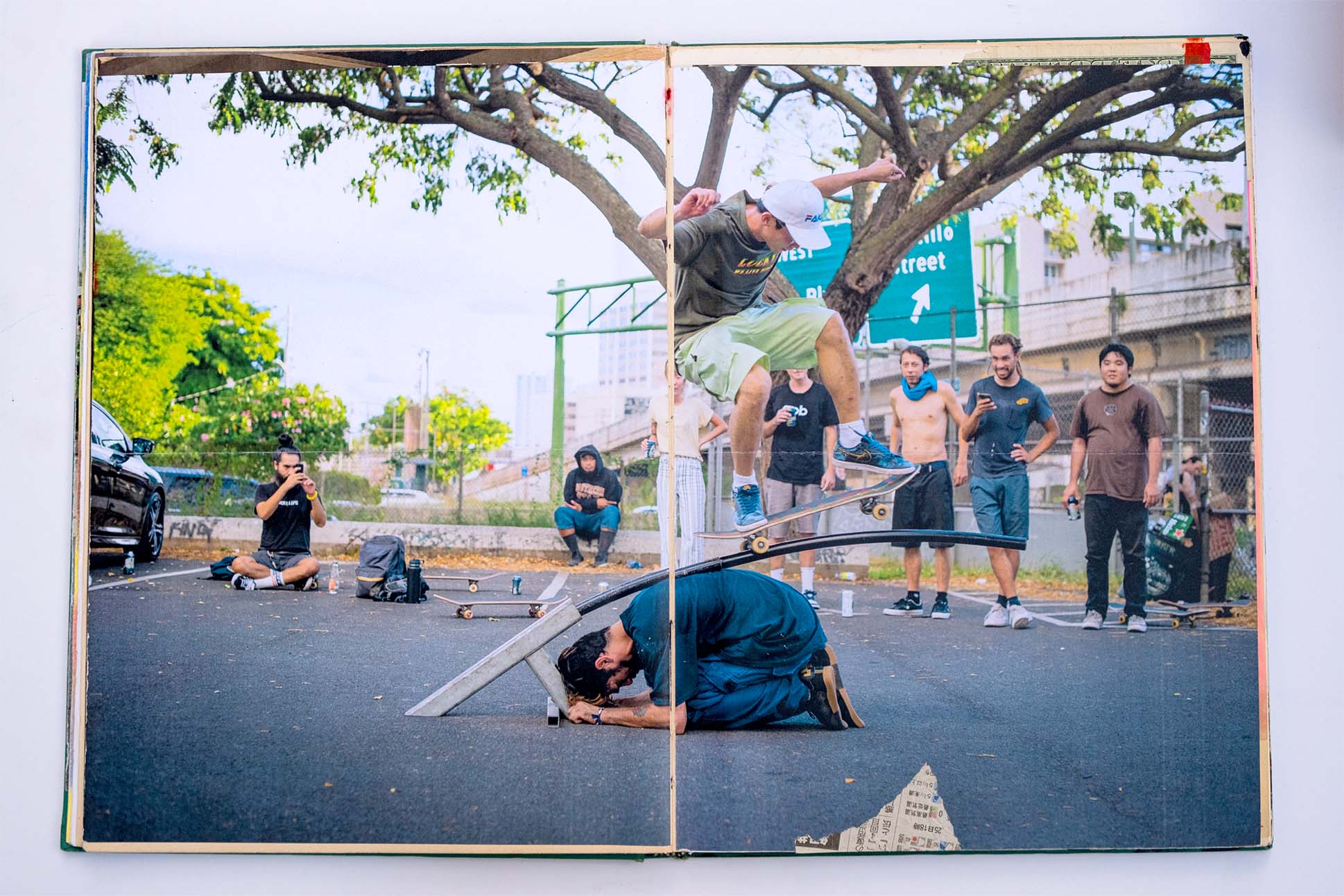

PJ Having good mentors early on is so important. Who were some of your early mentors and what was it about them that you gravitated towards? Can you remember any advice that stuck with you and would still be applicable today?
MM I agree, mentors are a necessity to take your discipline to the next level. The school I went to really pushed us to take on internships and attend workshops. From there is where you’ll find your mentors. For me I got excepted to the Eddie Adams Workshop in update New York. It’s a photojournalism workshop where all the biggest names in the industry volunteered their time to teach the next generation. I got excepted in really early on in my career, just taking pictures for two years at that point. There I met Clay Patrick McBride, who’s a dear friend and mentor. He single handily changed my life. He took me under his wing and that meant everything to me. Just him doing that gave me the confidence I needed to take to take the next step in my career. What’s funny is when I think about what he taught me, it’s the life lessons way before any of the photography tech and lighting stuff — it’s the life stuff, the goal setting, the visualization, the paying it forward. I remember him listing out what hip-hop stars he wanted to photograph that he hasn’t yet. Then through out the years I saw him check those boxes off.
We first bonded over our photo journals. But, what stood out to me what his positive energy and he treated me on the same level as him, even though I was the student and really looked up to him. Yet, during this time, we really did help inspire and push each other. Some really great times, looking back during that time. I know sometimes you need someone to believe in you to help believe in yourself. So all those I still practice daily.
Now that I’m in a role here in Hawaiʻi working as a photo editor, I sure try and pay it forward and help out the next generation any way I can, just like Clay and all my teachers did for me when I was coming up. And, thank you, Phil, for teaching the next generation of creatives here, you’re doing the Lord’s work.
I also worked with National Geographic photographer Gerd Ludwig for two years. Working closely with him and seeing how a professional photographer at the top of his game works day in and day out was a big help to my career.
Both of these mentors and my parents have crazy work ethics. So just seeing that first hand is so inspiring. All of them are doing what they love. It’s not their job, it’s what they were put on this earth to do.
Some other advice my mentor Clay drilled into me is what he calls “stacking the bricks.” It means you keep creating images and they are like bricks and over time of chipping away and producing strong work that you’re passionate about, you’ll start to build your house, a.k.a. your portfolio, a.k.a. your life’s work. One brick doesn’t seem like much, but over time you’ll really start to see the house take shape.
And thinking about that concept, I guess with each journals’ page I create, it’s just one at a time. But now that I’ve been doing it for 20-plus years, I’ve got almost 50 journals.
Lastly, just to throw it out there, Clay and my mom both have taught me that “if you’re five minutes early, you’re ten minutes late.”
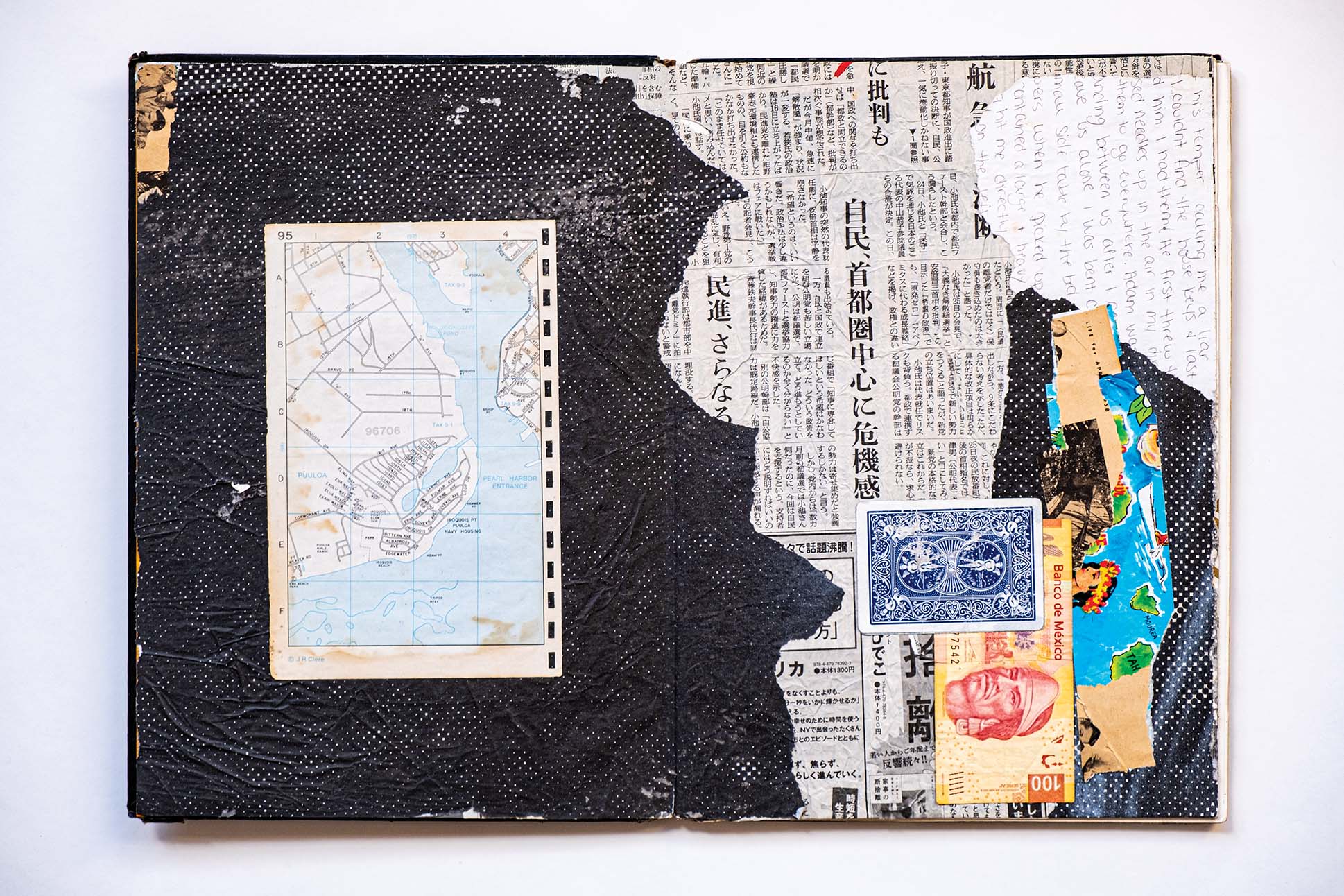



PJ I’ve heard you mention doing the reps and putting in the time to make work. Can you explain what you mean?
MM In short, “putting in the reps” applies to everything in my life that I want to improve in. You won’t see the results overnight, but if you keep chipping away at it everyday and investing the time into it then after awhile the sculpture with will start to take shape. But that of course applies to everything in life. The more you do something, the better you’ll get at it, and your personal vision and style will rise out of it.
Going to go off on a little tangent here, but “putting in the reps” is a big theme in my life. As I’m someone who, when I get into something, I get into it. For instance, my three hobbies that I’m continually trying to improve at are street photography, skateboarding, and competing in multi-table poker tournaments. All three have so many parallels that all play off each other. So I’ve noticed if I grow at one, it helps the other out too. I know a big one is you fail at it — what feels like 95 percent of the time — you pick yourself right back up and keep at it. You do it for that 5 percent that makes all those failed reps worth it. So the mental resilience that is involved in all those is pretty crazy. But what you have to do is keep putting in those reps — just keep at it and it will pay off. The best street photographers, the best skaters, and the best poker players are the one’s who put in the most work and the most reps. There, of course, is some luck involved. But luck favors the ones who train the most. A little motto that relates to all that is “treat it like an amateur and you’ll get amateur results.” Regarding skateboarding, that has been such a gift for me in my life for this reason. It’s taught me from a real early age that if you really want something you have to keep working hard at it. Also these three hobbies, you all start with the same thing. Skateboard and camera, but you can add your own personal style to it. That’s the beauty of it all.
Finally, with all three, you are really just completing with yourself and trying to improve from who you were yesterday.
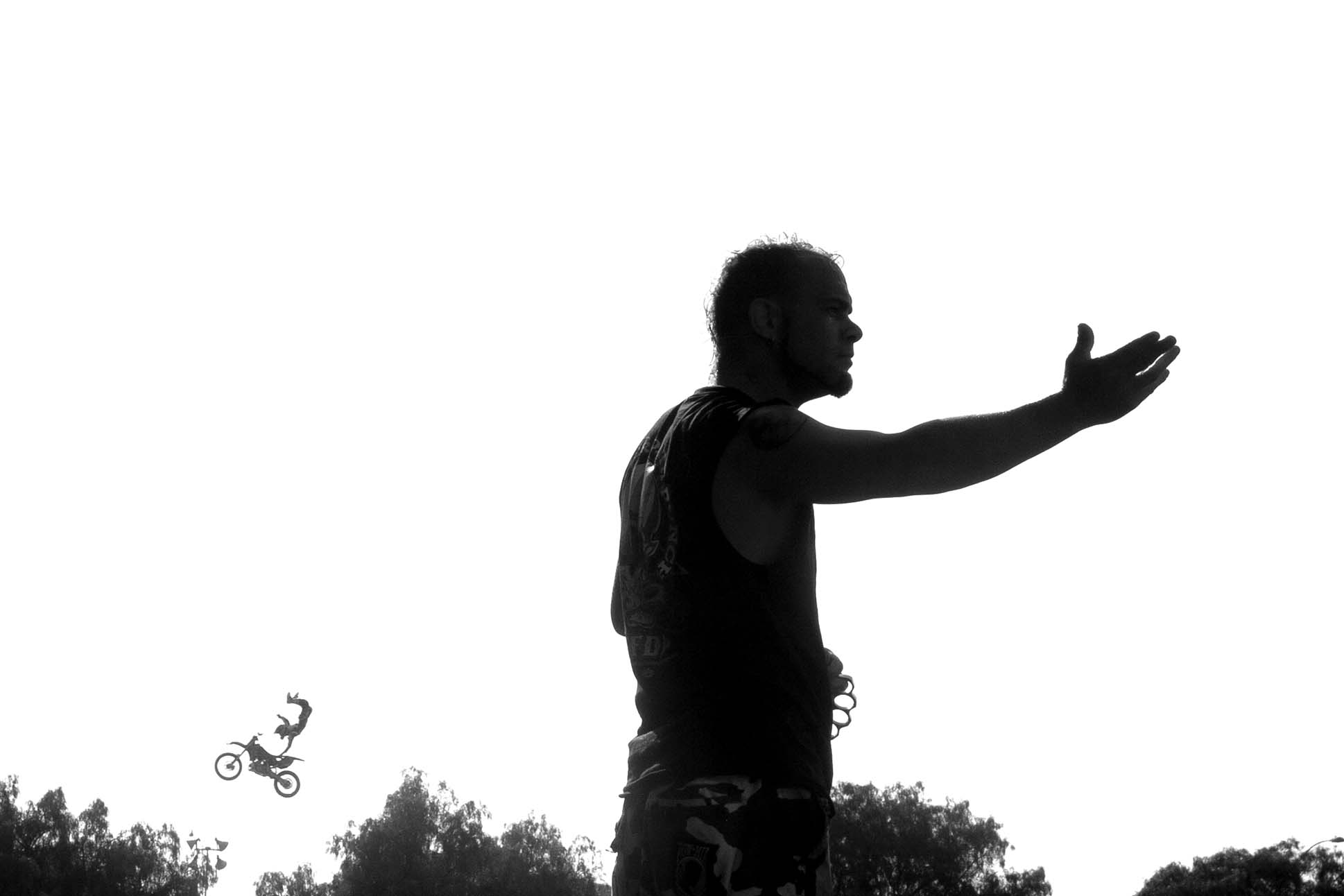

PJ Take us out shooting with you. What would we see if we were there with you as you photographed? How do you move, interact and work through capturing a scene or situation?
MM I follow the light. I look for strong shadows. I look for clean backgrounds. I look for busy street corners. I look for reflections. Sometimes I have an “act like I own the place” confidence, while being myself and showing respect to everyone.
PJ Your photographs have a type of painterly aesthetic to them. That comes from your use of color and the graphic nature of some of your compositions. Many of your images have large swatches of color — and shadow — covering the frame. Is this something you’re doing intentionally? What are some of the things you consider in relationship to color when you are out in the world photographing?
MM I’m just drawn to strong colors and deep shadows when trying to get creative with the compositions. Sometimes also trying to break the rules of conventual composition and other times trying to add as many elements that I can pack into the frame at once. All while making sure it’s all organized, nice, and neat. Just personally, I like things tidy in my life. It helps me think clearer and I’ve notice that bleeding into my street images. I like to make sure none of the elements are touching and things in the images are framed nice and neat.
A couple of the images in this portfolio feature illustrate that. For example, in the last image in the feature, this guy head is touching the light pole. I wish there was separation there, yet I do like how the couple is framed under the child that’s being lifted up.
PJ You have constructed mixed media work in your journals. The pages use not only your own images, but also found imagery and materials. It really distances itself from traditional photography. They are more akin to painting and mixed media. Do you still feel some obligation to conventional photography in how one thinks about the final piece?


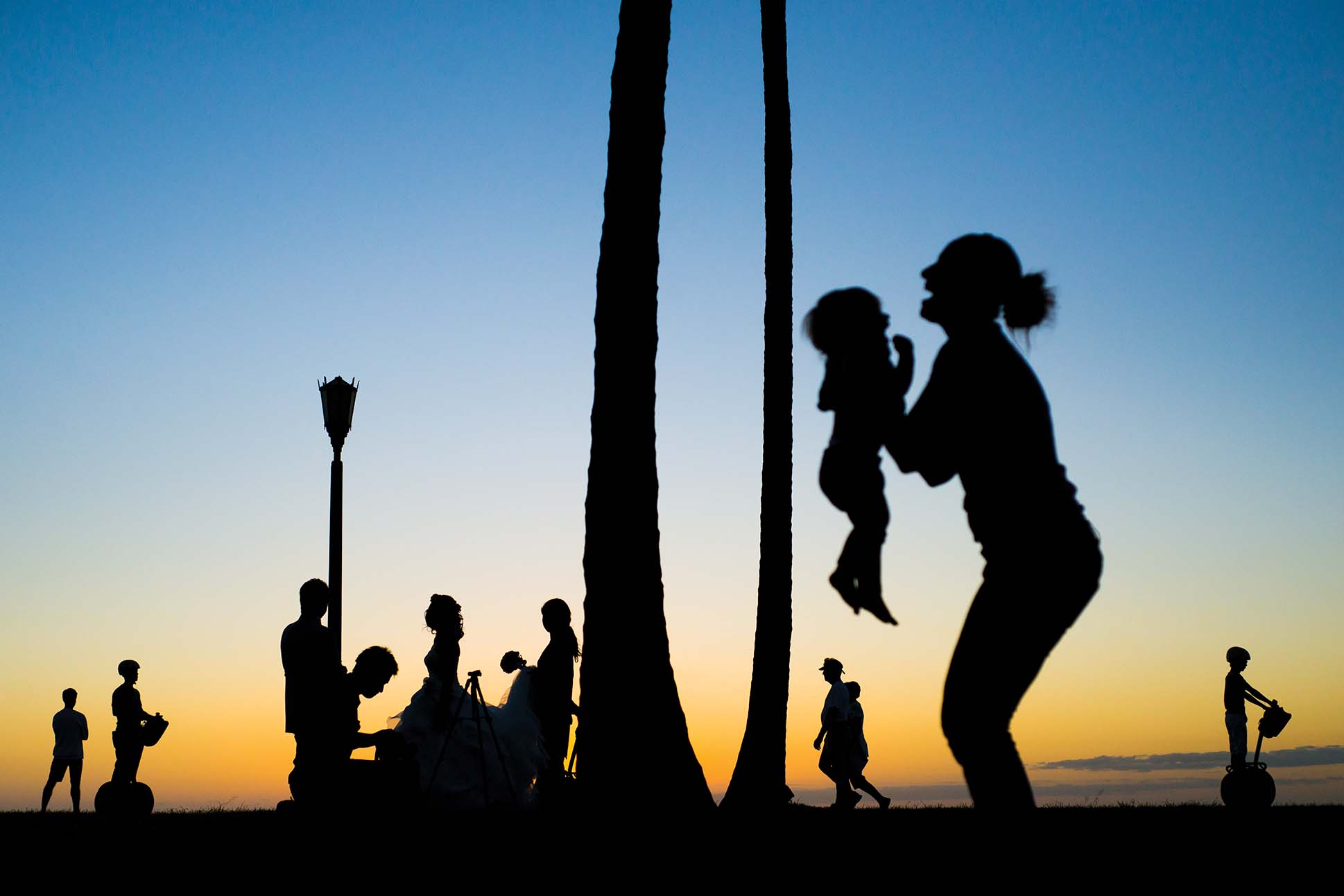

MM I have no obligations with my journals at all. That is where I can do whatever the hell I want. The reason I’ve been able to do so many and keep doing them is because there is no right or wrong way to do them. The only rule I have is to keep doing them. But what I do with my multi- media journals is collect as many elements I can that speak to me, or remnants of my life like photographs, movie tickets, a friend’s gallery show flier, a found note I picked up on my walk to the office, lost dog flier, et cetera. And I take those and lay them all out and create a collage that feels right compositionally, just as I would while I’m out composing a street image — both are elements framed between four corners.
PJ If someone were to find your journals 100 years from now, what do you think they say? What would they learn from looking through the journals?
MM I hope they last that long with the moisture in the air here and my lack of using archival prints and glue [laughs]. But I think people would see how much I loved my family, my friends, and these islands.
I shared a bunch of my journals at a show last year at Fishcake in Honolulu and I noticed a lot of the feedback I got was about the volume of pages I’ve done and a lot them wished they started journaling or wish they hadn’t quit. And of course I tell them that they can start tonight. No better time than right now. Because before you notice a year has gone by or five. So just take that first step. That all goes right back to the “reps” and the “stacking the bricks” concepts.
This interview has been edited for clarity.

